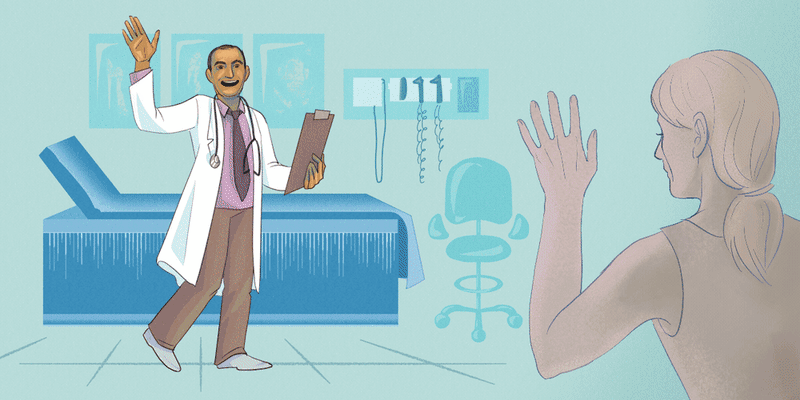In 2004, my patient changed me.
Over my 19 years as a cardiologist, I've seen remarkable advancements in treating and managing heart disease and mind-blowing medical advances, but I could not get people moving.
After years of frustration over the lack of motivation to move, I asked my patient to go for a walk with me. Much to my surprise, that patient said “yes.”
That “yes” acted as a catalyst.
Six months later, we had over 100 people at the local park for our first Walk with a Doc. It was simple – walk the talk. Nearly two decades later, that first walk has evolved into 547 chapters across the world, with a network of about 2,000 doctors who volunteer to lead the walks.
In 2004, my goal was to make health more accessible and fun. As our programs grew, our impact evolved too.
After attending the White House Conference on Hunger, Nutrition, and Health this year, I realized more clearly the disproportionate effect that hunger and nutrition have on the health of underserved communities. Millions of Americans are afflicted with food insecurity and sedentary lifestyles, directly contributing to death, disease, and disability in the U.S.
Even I feel overwhelmed by this. In reflecting on what has worked for my patients, I want to share some of my thoughts, for what it’s worth in your practice.
Nutrition
Strong evidence supports the efficacy and cost-effectiveness of nutrition therapy as a component of quality cardiometabolic care. The logical place to start with nutritional wellness is nutrient-dense foods. The connection between fresh fruit and vegetable consumption, and heart health, is undeniable. According to the Dietary Guidelines for Americans, however, most Americans are not eating enough of them.
As a starting point, I work with my patients to identify fruits and vegetables they enjoy and break down barriers that can make fresh food intimidating. For heart health, avocado, for example, checks many boxes. As a good source of fiber and unsaturated fat I knew there was general acceptance of the heart benefits so it has been a nice surprise to recently learn there is active research to help us better understand the specific impact on human health.
Take, for example, steps by independent researchers to get to the science of how and why consumption impacts cholesterol. There was a systematic review and meta-analysis involving 481 patients and seven studies through which researchers found that including avocado in a diet increased HDL-cholesterol (HDL-C). They decreased the ratio of total cholesterol to HDL-C and the ratio of LDL-C to HDL-C, compared with an avocado-free diet. (It's important to note that the daily avocado intake in these studies ranged from one to 3.7 medium avocados through studies of at least three weeks in length.) As a health professional, I appreciate that the research never stops, since there are always limitations that prevent generalizations, and we need scientific data like this to feel confident in our recommendations.
Avocado is a single example of a nutrient-dense food with potentially life-altering health benefits. I also like pears, berries, carrots, and others. Nutrition is a critical component of overall health. Leveraging the expertise of a dietitian will position you to support your patients' holistic well-being.
Physical Activity
Movement is preventative. The evidence shows that insufficient physical activity contributes to heart disease and other risk factors, such as obesity, high blood pressure, high cholesterol, and type 2 diabetes.
Although many people accept this now, did you know it is also essential for healthy aging? Did you know that increased physical activity has been shown to reduce the risk of anxiety and depression and can improve sleep? Walking is a good starting point for many people because it’s accessible to most. The Physical Activity Guidelines for Americans also offer excellent resources and recommendations for all age groups.
Sleep
The CDC outlines sleep guidelines based on age; less than seven hours of sleep for adults is inadequate. One in three adults isn’t getting enough sleep. Research suggests that short sleep duration results in metabolic changes linked to obesity and various chronic diseases and conditions.
Poor sleep may adversely affect the function of the hypothalamus, which regulates appetite and energy expenditure. Ask your patients about their sleep habits and work them on solutions, if this is an issue.
Social Connection
Did you know that the effect of social isolation and loneliness on mortality can be comparable to other risk factors like smoking, obesity, and physical inactivity?
Things changed for our patients and us during the pandemic — especially exercise habits, eating patterns, sleep, and connecting with others. The practice of engaging with new people and reconnecting can be challenging right now.
Here are a few tips to share with your patients to aid in establishing a balanced, achievable, health-forward routine.
Every bite counts:
- Slow down. Practice intentional eating.
- Learn how to recognize and prioritize nutrient-dense foods like fruits and veggies.
- For further guidance on conscious eating, here’s a guide from the CDC.
Making moves:
- Set aside two short 10-minute breaks for walking during your day.
- Try “temptation bundling.” For example, if you love a certain podcast, only allow yourself to listen when you go for a walk.
- Move! You do not need to break a sweat to benefit from the power of movement.
Rest is best:
- Develop a sleep routine. Consistency can support a healthy sleep cycle.
- Practice the same pre-bedtime routine; read a book, drink herbal tea, or meditate.
- Be active during the day. This can help you fall asleep at night.
The social network:
- Add social gatherings to your calendar.
- Join a local walking club.
- Find like-minded people — or an accountability buddy — to develop healthy habits alongside.
With our patients, we can develop positive habits and sustainable routines to achieve healthier, longer, and more prosperous lives.
What approaches have motivated your patients to work on improving their health and well-being? Share your strategies in the comment section.
Dr. David Sabgir is a full-time cardiologist in Columbus, OH and the founding CEO of Walk with a Doc, an international nonprofit with a mission to inspire communities through movement and conversation. David went to Miami of Ohio for undergrad, Medical College of Ohio for medical school, and served his internship, residency, and fellowship at The Ohio State University Medical Center. David continues to personally invite his patients to walk alongside him and sees Walk with a Doc as a critical next step in the care of our communities.
Image by GoodStudio / Shutterstock







